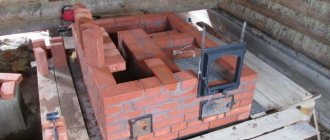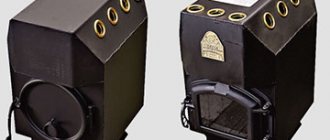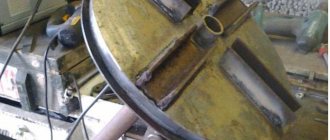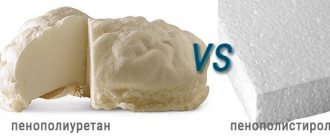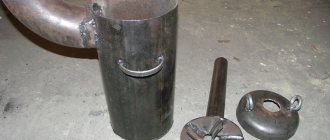Cast iron stoves for a long-burning home are one of the best options, as they have many advantages over conventional heating devices that run on solid fuel. Due to their technical characteristics, as well as the external design of many models, they are perfect for installation in both a small country house and a large, well-kept mansion.
Cast iron stoves for long-burning homes
Even if there is a gas supply to the house and a completely effective water heating system is created, a cast iron stove may not be superfluous, as it will help maintain comfortable living conditions in the off-season or on inclement summer days. In addition, the “living warmth” from the stove always creates some special comfort.
Manufacturers of long-burning stoves claim, and practice proves, that devices with a classic design are not as effective as their products, since they heat the room only due to the active combustion of fuel in a conventional firebox. When the firewood is completely burned out, appliances with a conventional fuel combustion scheme quickly cool down, therefore, in order to maintain the desired temperature in the room, it is necessary to constantly add fuel. When using long-burning stoves, the frequency of loading the stove with wood is reduced to two or even once a day.
Efficiency of long-burning furnaces
- The stove design consists of 2 combustion chambers. In the first chamber, solid fuel burns with a low proportion of oxygen. In the other chamber, gases released during fuel combustion burn.
- But the whole point is that the fuel combustion process is considered low-calorie, since heat is released in small quantities with a sufficient temperature to heat the required room.
Adjustment
Furnaces with an inlet damper and gate are highly adjustable. You can quickly reduce the temperature of the body and increase the burning time of the wood. This is a significant plus.
Please note that such stoves cannot be operated with the air dampers fully open.
The Greivari stove copies Butakova in many ways. Photo: Greivari
How does the stove work
Now we will explain to you the operating principle of this stove. To begin with, we are interested in the process of fuel combustion in the first chamber of the unit.
Although it would be more correct to call this process “smoldering”, since with a small proportion of oxygen, solid fuel cannot burn fully. Therefore, it will smolder.
Stages of heating a house
Fuel is placed in the stove and ignited, while the ash flap remains completely open. This is necessary so that the fuel heats up and begins to release thermal energy to the maximum level in order to heat the room to the desired temperature.
Interesting fact. Thanks to the use of this stove, the house can be warmed up in about thirty minutes.
After the house has warmed up, we move on to the low-calorie process. The blower damper closes, thereby blocking the entry of oxygen into the combustion chamber.
I would like to add that today there is a huge selection of long-burning stoves. Therefore, the buyer can purchase a stove at his own discretion, based on the technical characteristics of the model: power, external data, frequency of fuel loading.
Minus again: creosote in the pipe or what it entails
Condensation itself would not be so terrible for owners of wood-burning stoves, if not for one more “but”. Mixed with combustion products, condensate forms creosote, which also settles on the walls of the chimney.
Creosote is a flammable substance with an unpleasant odor that is deposited along the chimney pipe. Extreme heat, high temperatures and burning embers that “drift” through the pipe can easily ignite creosote and cause a fire.
There are several stages in the formation of creosote, each of which leads to an increasing danger:
- Soft creosote with a flaky structure (like soot), and it can be easily removed with a regular brush;
- Hardened, shiny creosote with a scaly structure. At this stage, the creosote is more difficult to remove and sticks to the inside of the chimney like tar.
- Concentrated creosote with increased stickiness (resin-like substance). At this stage, the creosote compacts and hardens over the entire surface of the pipe.
The biggest disaster associated with the presence of creosote is the real risk of a fire in the chimney pipe. Creosote is extremely flammable. If the creosote catches fire, there will be trouble, because... A fire in a chimney is extremely difficult to extinguish. And with an increased amount of creosote, the fire will easily spread into the room.
Figure 2. Adhered creosote (soot) on the walls of the chimney
Efimov Maxim Store manager on Vyborg highway. 212
Please note that in a fire situation, the main role is played by the quality of insulation in the pipe and the quality of installation, namely, competently made fireproof floor passages. You can order such installation from our specialists. We will always help!
Pros and cons of long-burning stoves
Unfortunately, the stove has not only advantages, but also disadvantages.
Benefits of use
- Saving fuel consumption. This is the most basic advantage of such stoves and you can’t argue with it.
- High efficiency. This was mentioned in the article above.
- Large model range. Today, manufacturers offer different models of stoves that are perfect for any interior.
- Ease of maintenance. You can bookmark at a high interval: from 5 hours to two days.
- Choice of fuel. It is possible to use any type of fuel.
Interesting fact! Today there are long-burning combination boilers on sale.
Transportation
A “Breneran”, “Greyvari” or “Butakov” stove can easily fit in a passenger hatchback or station wagon with the rear seats folded down. Two people can easily lift it and install it on a pre-prepared “pedestal” (according to the instructions, the unit should be on a raised platform to ensure better convective heat transfer). The ability to save on transportation and installation is a definite plus.
Breneran stove on a stand with a woodpile. Photo: "Breneran"
How to choose a stove
Before purchasing a stove, you need to determine at least two important points.
First, what will be the area of the heated room? Since heating equipment manufacturers offer stoves that can heat houses with an area of 80 to 250 square meters.
Second, how long will the fuel smolder? In this case, the stove can be divided into 3 groups:
- Minimum time: from 5 to 8 hours;
- Average time: from 8 to 10 hours;
- Maximum time: more than 10 hours
Content
Despite all the popularity of natural gas in the modern world, there are still places where its use is still unavailable. In this situation, a person will be helped by a stove in a wooden house, which is heated with wood fuel or coal. You can purchase this fuel at any time of the year.
Classic stove design
In appearance, the potbelly stove resembles an ordinary rectangle on legs. It is equipped with a door and a compartment for fuel, and an ash drawer for combustion waste. In addition, any potbelly stove is equipped with a branch pipe where an exhaust pipe with a length of 5 meters or more is installed. The length of the pipe directly affects the thrust and power of the device. The furnace body is made of steel or cast iron. We also recommend reading about the chimney for a potbelly stove in the garage on our portal.
Potbelly stoves are classified into two types:
- Metal devices.
- Brick buildings.
Brick models fit perfectly into a small country house and can heat several rooms at once. The stove heats the rooms evenly and allows you to retain heat for a long time. The only drawback of a brick potbelly stove is the long heating process. But the brick adds more functionality to the device; for example, during masonry, you can build a place for cooking. Craftsmen can arrange a recess for the oven.
Models of cast iron stoves are compact and easy to install, because they can be placed in any suitable place. The main thing is to fold the chimney correctly so that it can be easily moved thanks to the corrugated pipes.
Difficult climatic conditions are a factor that everyone living in the vast Russian territory has to take into account. With the onset of cold weather, houses, apartments, and industrial buildings are connected to centralized heating systems that supply heat and create comfortable conditions for us throughout the heating season.
What is a stove made of?
Many private homeowners have a question: is it possible to make a long-burning stove yourself? The answer is obvious: of course yes! The main thing is suitable material and certain skills. If these conditions are met, then there should be no problems.
- Then the question arises: what can a stove be made from?
- The answer is: it can be made from cast iron, brick and steel.
- Then the next question arises: what material can it be made from?
It is better not to mess with cast iron due to the fact that the technology for casting all the necessary parts is quite complex and energy-consuming. All that remains is brick and steel.
What can you say about brick?
Brick is a good and reliable material for making a stove. But it has a significant disadvantage - it takes a long time to warm up the house in order to achieve a comfortable temperature, since brick has inertial properties.
Therefore, in order to warm up the house well, you will need to consume a large amount of fuel.
From all this, only steel remains. In the next chapter, we will tell you how to make a long-term storage oven with your own hands using a metal barrel.
Stove heating: advantages and disadvantages
Despite the abundance of high-tech boiler installations, simple wood-burning stoves have not lost their relevance in our time.
- Low fuel cost. Cut branches and dried trees can be found at any summer cottage, so you can prepare firewood for the winter without serious labor or any expenses.
- Independence from energy supplies.
- A lot of additional possibilities with maximum simplicity of design: drying things, cooking (in designs with a hob), installing a thermoelectric module - this is not a complete list of the capabilities of wood-burning stoves.
- Ease of use.
- Possibility of heating several rooms at once (when installed in the center of a country house).
There is another advantage that is not entirely obvious, but it is the simplicity of the design, which makes it possible to create a wood-burning stove with your own hands.
However, the owner of a stove heating system will have to put up with such disadvantages as: fire hazard and the absence of any automation that controls the combustion process.
Do-it-yourself long-burning stove
In this chapter we will look at a homemade version of a long-burning stove. It's called Bubafonya. This stove does not require any special financial costs and is quite easy to make.
Of course, without having basic skills in working with electric welding and a grinder (popularly called a “grinder”), it is better not to make it, in order to avoid injuries and mutilations.
Self-installation of a potbelly stove
When choosing a stove option for a country house, it is important to carefully calculate the required power for heating the selected area. A potbelly stove with an area of 1 sq.m can heat a room of 35 sq.m.
When choosing a stove for a country house, it is important to carefully calculate the required power for heating the selected area
An important factor in the operation of the device is the blowing of heat out of the room and the influx of cold air into it. For example, cracks in windows or floors that create a draft will noticeably disrupt the operation of the potbelly stove. An excellent solution for a two-story country house is a two-tier potbelly stove with a common chimney. Read more about installing a homemade potbelly stove in a country house on our website.
Video: installation of a potbelly stove and chimney
If you want to reduce the cost of installing and purchasing a stove, you can try to make it yourself according to the instructions.
Self-assembly of a potbelly stove
What components do we need?
- Iron sheets (thickness approximately 5 mm.)
- Pipe (diameter 100 mm.)
- Grate.
- Asbestos cord.
Next, we move on to the main stages of creating a long-term storage stove:
- The lid of the barrel is cut out.
- A hole is cut at the bottom of the barrel to fill the fuel.
- A hole for the blower is created even lower.
- 4.Wire guides are welded inside the barrel.
- 5. A hole for the chimney is cut at the top of the barrel on the side.
- 6.Then a pancake is cut out of a metal sheet with a diameter almost like a barrel, a hole is cut in the middle and a pipe is attached.
- 7.Next, we assemble the unit.
Well, everything is done. All that remains is to install the stove at its destination and attach the chimney to it.
To summarize, we can say that today such stoves are becoming more and more popular, since they have more advantages compared to traditional stoves. The main advantages of such a stove are economical fuel consumption and high efficiency.
